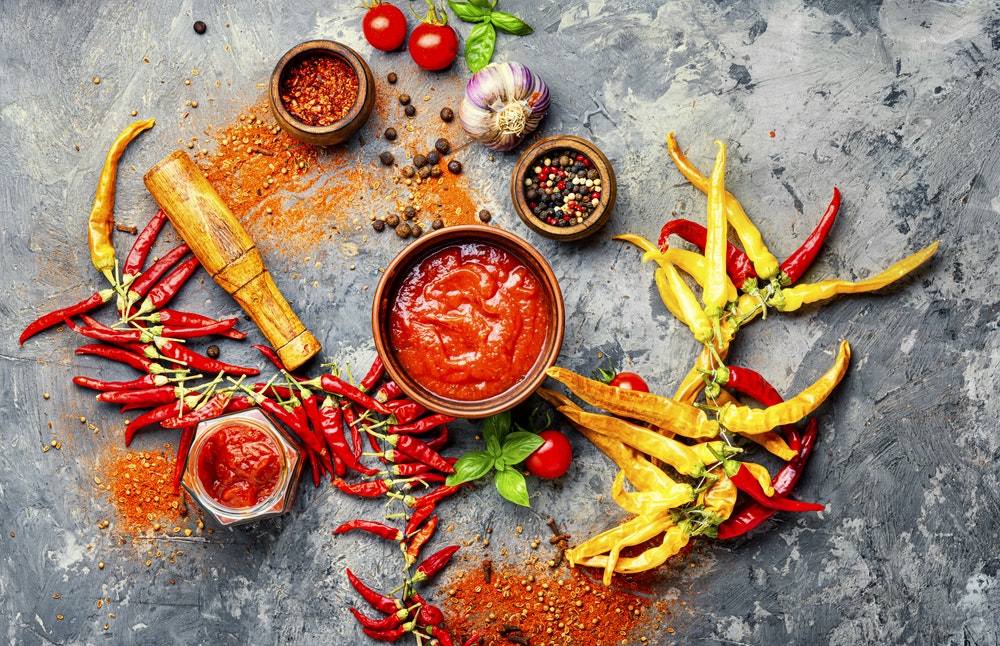Sauces are the backbone of many recipes, from pasta to pizza, and even to a pan of roasted vegetables. They provide the flavor and the richness that make our meals delightful. Whether you are a beginner or a seasoned cook, mastering the art of making homemade sauces will elevate your cooking game. This article will guide you through various methods, tips, and easy recipes to create your very own homemade sauces.
The Basic Building Blocks of Sauces
When diving into the world of cooking sauces, it is essential to understand the basic components that form a sauce. These fundamentals will help you create a wide variety of sauces with ease.
Dans le meme genre : The benefits of plant-based cooking
The base of most sauces is a liquid, which can be as simple as water or as rich as a homemade stock or cream. The next essential ingredient is a thickening agent, such as flour, cornstarch, or even egg yolks. Then comes the flavor components, like garlic, onions, herbs, spices, and more. Finally, the fat aspect, often provided by butter or oil, which adds richness and helps carry the flavors throughout the sauce.
Versatile Sauce Recipes to Add to Your Repertoire
Having a repertoire of basic sauces can help you immensely in the kitchen. These are easy to make and require ingredients that are most likely already in your pantry.
Avez-vous vu cela : How to cook with aromatic herbs
Béchamel Sauce: Also known as white sauce, is a classic French sauce made from butter, flour, and milk. It is the base for many dishes like lasagna and macaroni cheese. Melt some butter in a pan, add an equal amount of flour, stir until it forms a paste, then slowly add milk, whisking constantly to prevent lumps.
Tomato Sauce: A staple in Italian cooking, tomato sauce is versatile and can be used in numerous dishes. Sauté garlic in olive oil, add canned tomatoes, some salt, sugar, and herbs like basil or oregano. Let it simmer for about 30 minutes, and you will have a sauce that’s perfect for pasta, pizza, or meatballs.
Alfredo Sauce: A rich, creamy sauce for pasta made from butter, heavy cream, and Parmesan cheese. Melt butter and cream together in a pan, then stir in freshly grated Parmesan cheese until it’s entirely melted. Season with salt and pepper, and you have a quick, easy Alfredo sauce.
Techniques for Making Perfect Sauces
The process of making sauces can be simple or complex, depending on the recipe. However, there are a few general techniques that can help ensure your sauce comes out perfect every time.
Whisk Constantly: To prevent lumps from forming in your sauce, don’t stop whisking. This is especially crucial when making sauces that involve a roux or a slurry like a Béchamel or gravy.
Adjust for Thickness: If your sauce is too thin, you can thicken it by making a slurry of flour and water and slowly adding it to the sauce. If your sauce is too thick, simply add a bit of the relevant liquid to thin it out.
Taste and Adjust: Always taste your sauce before serving it. Adjust the seasoning as needed, adding more salt, pepper, or other seasonings to balance the flavors.
From Pasta to Pizza: Versatile Uses for Homemade Sauces
Once you’ve mastered making homemade sauces, you’ll find they can be used in a wide range of dishes. Here are a few ideas to get you started.
Pasta: This is the most obvious choice. Whether it’s a creamy Alfredo sauce, a tangy tomato sauce, or a rich meat sauce, pasta and sauce are a match made in heaven.
Pizza: Homemade pizza is taken to the next level with a delicious homemade sauce. Tomato sauce is traditional, but you can also try a white sauce or a pesto for a different twist.
Roasted Vegetables: Toss roasted vegetables in a flavorful sauce to take them from ordinary to extraordinary. A garlic and herb butter sauce, for example, would work wonders on a pan of roasted root vegetables.
Enhancing Flavors with Homemade Sauces
Whether you’re a seasoned chef or a home cook, sauces can elevate your dishes and bring out the best in your ingredients. Understanding how to balance flavors and textures in your sauces will help you transform even the simplest of meals into something extraordinary.
Remember, the key to a great sauce is to taste it as you go and adjust the seasoning as necessary. So, don’t be afraid to experiment and have fun in the kitchen. After all, the best dishes are made with love and passion. Happy cooking!
Crafting the Perfect Pan Sauce
Creating a pan sauce is one of the most essential skills to have in your culinary toolkit. A pan sauce enhances the flavor of meat dishes, especially chicken and fish, and is straightforward to make. The idea is to utilize the flavorful bits, often called fond, left in the pan after cooking meat.
Start by removing the cooked meat from the pan and add a small amount of liquid to deglaze the pan. This liquid could be wine, stock, or even just water. As the liquid simmers, use a wooden spoon to scrape up the fond. This process infuses the liquid with flavor.
Next, add your choice of aromatics like garlic or shallots to the pan, cooking until they are soft. If you want a bit of heat, you can add red pepper flakes at this stage. Now, you can add additional flavoring agents like herbs, spices, and even flavored vinegars.
Finally, to thicken the pan sauce, swirl in a knob of butter. This not only gives the sauce a velvety texture, but also adds a rich flavor. Remember to taste and adjust the seasoning before drizzling it over your cooked meat.
From a simple chicken dish to a fancy steak dinner, a homemade pan sauce can elevate any meal. By mastering pan sauces, you become one step closer to being a sauce-making pro.
The Five Mother Sauces: The Foundation of Classical Cuisine
In the culinary world, the five ‘Mother Sauces’ are the foundational sauces from which all other sauces are derived. Knowing how to make these sauces is crucial for anyone wanting to master homemade sauces.
The five mother sauces include Béchamel, Velouté, Espagnole, Tomato, and Hollandaise. We have already discussed Béchamel and Tomato sauce in the previous sections. Velouté is a light stock-based sauce thickened with a roux. Espagnole is a rich, brown stock sauce, often reduced down and finished with a demi-glace. Finally, Hollandaise is a delicate sauce made with egg yolks, melted butter, and lemon juice, usually served over eggs Benedict or asparagus.
Each mother sauce has its own family of derivative sauces. For instance, adding cheese to a Béchamel sauce will give you a Mornay sauce, a classic cheese sauce perfect for mac and cheese. Similarly, adding a reduction of white wine, vinegar, and herbs to Hollandaise makes a Béarnaise sauce, commonly served with steak.
Mastering these essential sauces will open up a world of sauce recipes and significantly expand your cooking repertoire.
Conclusion: The Joy of Mastering Homemade Sauces
Understanding the art of sauce making is a surefire way to elevate the flavors of your meals. Whether you’re spreading tomato sauce on a homemade pizza, tossing pasta in Alfredo sauce, or serving chicken with a custom pan sauce, the right sauce can truly make a dish.
The fundamental building blocks of sauces – the base, thickening agent, flavor components, and fat – are easy to understand and play with, allowing you to experiment with a variety of sauce recipes. And don’t forget the versatility of sauces! From pasta and pizza to roasted vegetables and meats, a well-crafted sauce adds a delightful touch to almost any meal.
Remember, the process of making sauces is not just about following a sauce recipe. It involves tasting, adjusting, and having fun as you learn to balance flavors and textures. So, don’t be afraid to get creative and experiment with different ingredients. Who knows? You might create a unique sauce that becomes a hit at your dinner table. Happy sauce making!






